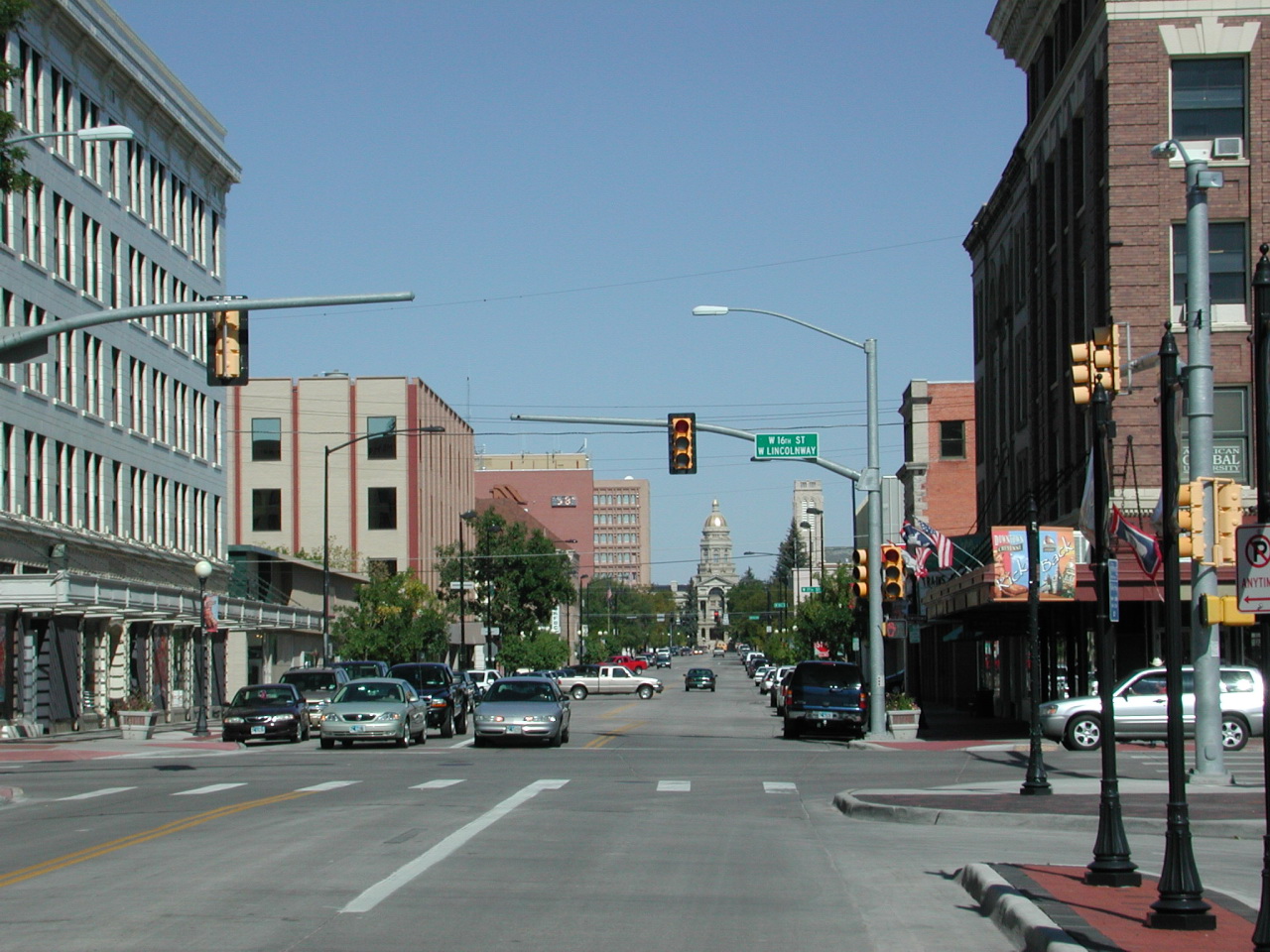Cheyenne (Wyoming)
Laramie County
56-13900
Cheyenne is the capital of the U.S. state of Wyoming. Located at the edge of the Laramie Mountains in the Laramie County.
History
1865 General camped Greenville M. Dodge and his troops at the site of the present Cheyenne, when he was tasked to find a suitable route for a railway line over the Laramie Mountains, the location has been identified as a suitable settlement point. Was appointed as Dodge, two years later to the chief engineer of the Union Pacific Railroad, he founded an initially regarded as provisional settlement on the site of present-day Cheyenne. In July 1867, the first settlers settled there when the Union Pacific Railroad built a station here. The name was the settlement of the case Dzitsistes Indians, in their own language "Cheyenne" about " foreigners" or " people who speak a different language " means and which thus received directly to the debt acting on them Neuankömmliche. Other sources, the Cheyenne but a group of Algonquian was after the " Shey ' to ' close ' ", named.
With the railroad, many settlers came and soon the city had about 60 brothels and saloons. With the railway workers also numerous traders and speculators came to the region, who hoped to doing good business here. At the turn of 1867/68 Cheyenne had 4000 inhabitants. 1868 Cheyenne became the capital of Laramie County and a year later, the city became the capital of the newly created Wyoming Territory.
From about 1870 Cheyenne rose to become a center of the cattle, which especially produced for the European market, which came from the 1880 numerous "cattle barons " in the area around Cheyenne. From 1875 onwards was also mined gold in the area of Cheyenne, again what drove many settlers to the region.
1890 Cheyenne, which now had about 10,000 inhabitants, was appointed to the federal capital of the state then collected Territory Wyoming. In the same year began the construction of the Capitol. Even before the turn of the century, many cattlemen of the region presented to the breeding of sheep, which were significantly better adapted to the prevailing climatic conditions of Cheyenne as cattle. To date, the sheep husbandry in the area of Cheyenne plays an important role. During the 20th century, Cheyenne increasingly developed into an industrial site.
Attractions
- Wyoming State Capitol
- Cheyenne Botanic Gardens
- Francis E. Warren Air Force Base
- Nagle Warren Mansion
- First Presbyterian Church
- First United Methodist Church
- St. Mark's Episcopal Church
- St. Mary's Catholic Cathedral
Economy
The government sector is by far the largest employer in the city, so busy, constantly the U.S. Air Force many employees at the Francis E. Warren Air Force Base. Another industry, the railway undertaking Burlington Northern Santa Fe and Union Pacific Railroad. Furthermore, the company Great Lakes Airlines and Taco John's are headquartered in Cheyenne.
Traffic
Cheyenne is located on the Interstate Highways 25, 80 and 180 in the city also lies the Cheyenne Regional Airport.
Demography
Cheyenne is still a center of livestock ( Cowboy Capital). Since 1897 every year the Frontier Days, a festival game with over 300,000 visitors.
Religion
Cheyenne is the seat of the Diocese of Cheyenne.
Sons and daughters of the town
- Burnu Acquanetta, Actress
- Rink Babka, discus thrower
- Mildred Harris, actress
- George Clayton Johnson, screenwriter, and film actor
- James Johnson, basketball player
- Rensis Likert, professor and social researcher
- Cynthia Lummis, politician
- Jim Siedow, actor
- Gail O'Brien, Football Players
Twin Cities
Twin cities of Cheyenne are
- China Republic of Taichung, Taiwan, since 1981
- United States Bismarck, North Dakota, since 1988
- United States Lompoc, California, since 1989
- France Lourdes, France, since 1990
- Voghera Italy, since 2002
- Tunisia Hammam Sousse, Tunisia, since 2006
- United States Waimea, Hawaii, since 2007









